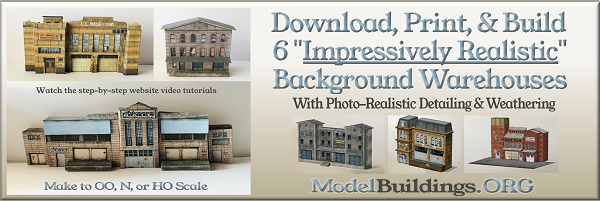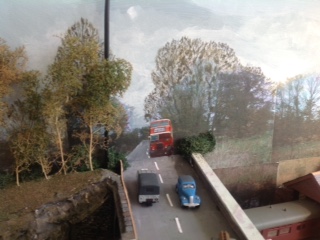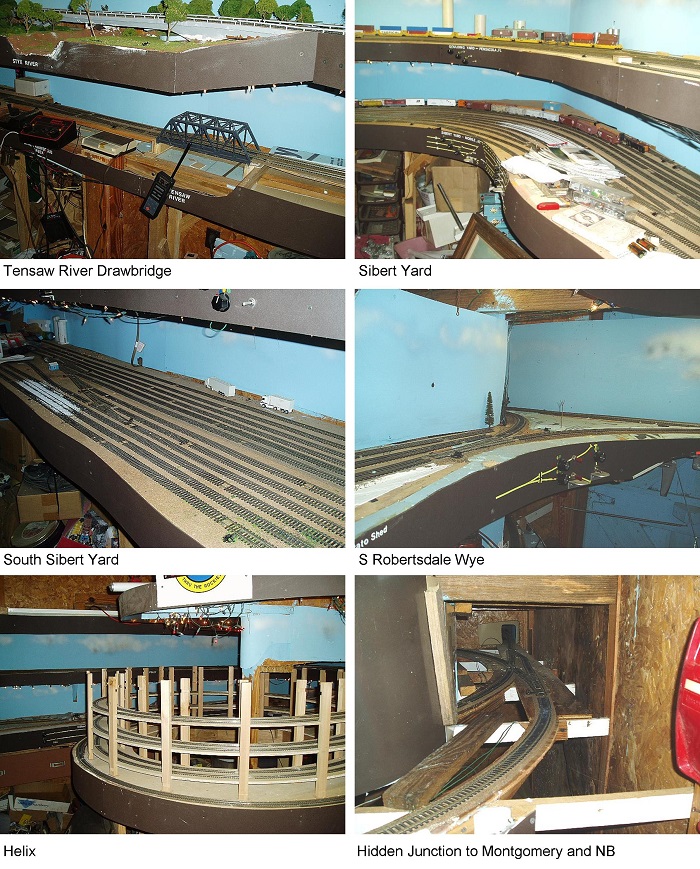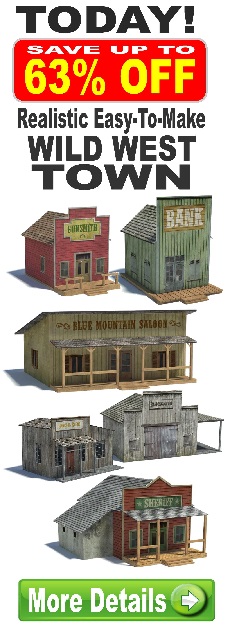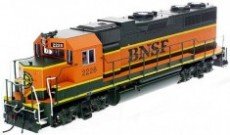Everything on model trains, model railroads, model railways, locomotives, model train layouts, scenery, wiring, DCC and more. Enjoy the world's best hobby... model railroading!
Clever Trick Of Bending The Backdrop
Alan sent in this info about his layout to share. The photos are amazing!
Hard to believe but the bus is a photo stuck on the backscene.
“When it comes to roads cutting across the layout and abruptly hitting the backscene, I blend it in by attaching a piece of thin card or even paper the same width of the road, painting it the same color then bending it upwards so it rests on the backscene. The road can then be extended by painting it disappearing into the distance. Hope this helps.”
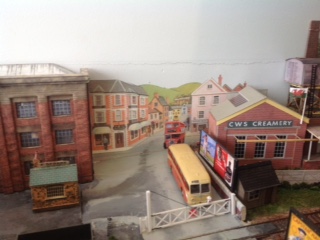
In this case the Peco backscene had a road on it. Again the bus photo is glued on.
Turnout Control
Dean asks readers:
What does it mean when they state “Smart Route can control an unlimited number of turnouts”. See below. Does this mean that I still need to purchase several of the Hare #dccdsphare1 for controlling the turnouts or will this unit control the tortoise without the Hare device ??
HARE DCC Stnry Dcdr
Product Features
Designed to drive the Tortoise Switch Machine (sold separately), this accessory decoder plugs directly on to the Tortoise simply connect to track power using the two handy screw terminals and the unit is ready to use. The Hare is compatible with all DCC systems that support accessory operations. And, many advanced features are provided to enhance operation including:
Auto Throw automatically throws points when train approaches against the points. Eliminates derailments, layout shorts, loco and scenery damage, and is ideal for difficult to reach turnouts and hidden staging. Works with both insul-frog and electro frog turnouts for Versions I and II.
Smart Route sets up to 13 routes by simple address programming in addition to the primary decoder address. Each Smart Route can control an unlimited number of turnouts. Eliminates complicated programming, the need for computer operation or system macros.
Smart Default Ops allows all Hare-controlled turnouts to move to a predetermined position when layout is powered up or to remain as last thrown. Eliminates possibly fouling the mainline when you power-up your layout.
Operates LED turnout signals or remote panel LED indicators.
Walthers Product Number: 246-DSPHARE1
Walthers Catalog: 2015 HO, page 830
Confusion Wiring Switches
Ed has this question for readers:
“I am a novice. I have a single track on a 5 1/2 foot by 9 1/2 foot layout. I have EZ loc track with five switches. I want to wire in the switches and build a control board but I am totally ignorant on wiring. I have a transformer for every switch (which I found out I don’t need?) and they are Life Like switches with the wiring on three sides of the “block? What do I do with all that? Please respond.”
Is This Steet Scene Real or A Scale Model?
Model railroading has come a long way with innovations like: smaller scales, DCC, LED’s, electronics, computers, walkaround throttles etc. The same goes for the scenery and structure aspects of the hobby. Acrylic paints, airbrushing, epoxy resin, super glue, downloadable buildings and other innovations have opened new possibilities for creativity in model realism.
This street scene model (using downloadable plans) is a perfect example of the high standard that can now be achieved for a relatively low cost. They are built with using corflute and spray adhesive (other recent inventions).
So, even though technology can be frustrating at times (especially for those of us with gray hair or no hair), it has brought many exciting innovations to the hobby. It’s this changing face of model railroading that will attract a new generation to the hobby. That’s why I keep an open mind and try to embrace change rather than fear it.
This shop scene is available here
Which Track To Choose?
Bob has a question for readers about track choice:
I already have the shelf idea in mind but in HO. I’m 60 years old and already have it tough enough working on HO Scale. I put together a HO Scale Model caboose and what a job that was. I have plans of constructing 2 Helix or Heli because of limited space and multi-level shelf. One at each end of the set. I do have one question. What would be the best track to construct a HO Scale train set? I bought 2 Bachmann Starter train sets because I liked the looks of the old style steam locomotives. The E-Z Trrack is nice to put together, but it doesn’t seem to be the best if there needs to be any kind of correction or adjustment, that it is easy to work with that pre-assembled track. Also, I see that Bachman is not as high a quality as BLI or a few other companies. But the pricing is a lot less.
Track Laying Tips
If you are about to construct a layout, then here’s a couple of track laying tips.
Why Does Rolling Stock Derail On Turnouts?
Rich has a question for readers:
“Sometimes I get derailments with rolling stock as they pass through a Bachmann ez track turnout. Sometimes it derails other time the loco follows the switch direction straight (as it is set) and the next car wants to travel up the switch curve. Any ideas as to why?”
Problems With Model Railroad S Curves
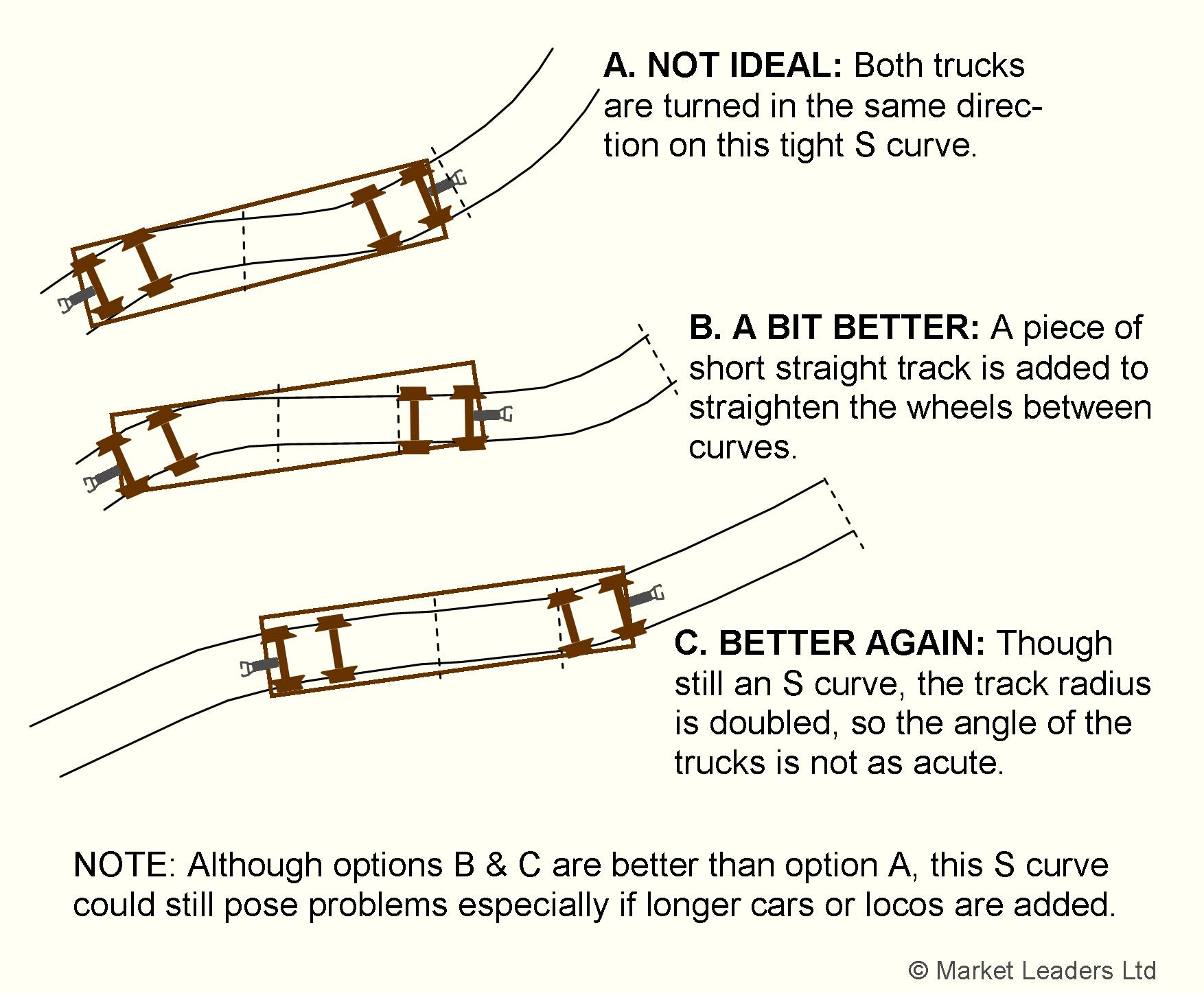 Curves look good and generally necessary to turn trains and keep them running without coming to a dead end, but curves use up plenty of room on a layout. And, the radius of the curves will affect the type rolling stock that comfortably operate without derailing and still look convincing when navigating the curve. Longer passenger cars, auto carriers, and large articulated locos will generally require a large curve radius.
Curves look good and generally necessary to turn trains and keep them running without coming to a dead end, but curves use up plenty of room on a layout. And, the radius of the curves will affect the type rolling stock that comfortably operate without derailing and still look convincing when navigating the curve. Longer passenger cars, auto carriers, and large articulated locos will generally require a large curve radius.
S-curves are synonymous with derailments and uncoupling, because having curves going in opposite directions makes it harder for trains to stay on the track. The frame of each car needs to turns in one direction when entering the S curve, and then turn the other way when exiting the s bend. The coupler on the rear end will attempt to follow it through the movement. At the same time the following car will be taking a slightly different route as it won’t have entered that part of the curve. This will produce strong sideway forces on the coupler trying to pull it off the track. So, even though it can be entertaining to watch trains navigating S curves, they are fraught with potential problems.
Download your FREE report – 33 Track Planning Mistakes To Avoid
Share it with your friends.
FREE REPORT – 33 Track Planning Mistakes To Avoid
Here’s a FREE report you can download and share with your model railroading friends on Facebook, by email, or post it on your blog or website if you have one. It is absolutely FREE!
The report walks you through 33 common track planning mistakes that can be avoided, saving time, money and an enormous amount of frustration. Even if you just pick up one or two new things from this report, it will be well worth getting.
Download and share this FREE REPORT HERE
Converting An Older Non-DCC Loco
Selwyn asks readers:
“I have a couple of older style non-dcc engines (HO scale) I would like to convert over to DCC. They are both diesels. I expect almost anything is possible but my real question is it worth the effort and where do I start?”
New Scale House Models Added To Range
The feedback on the 8 new scale model houses has been excellent with many readers telling their railroading friends about them. The designer certainly spent a lot of time perfecting the accurate and intricate detailing and it shows.
The 8 plans are available here for 70% off the individual listed price.
How Hurricane Destroyed Model Railroad
Blog reader Ken counts the day Hurricane Ivan destroyed his much of his model railroad.
A Bit of background – Back in September 2004 Hurricane Ivan caused widespread devastation in the United States and Caribbean. Ivan reached Category 5 strength in the Gulf of Mexico, becoming the tenth biggest Atlantic hurricane on record (Ivan was the size of Texas). Accompanying the weather system were 120 tornadoes. After reaching full strength, Ivan moved north-northwest striking Florida as an intense Category 3 storm. The hurricane caused an around US$18 billion (in 2004 money) of damage in the United States.
Let’s hear from Ken –
Here are some pictures of my layout taken the day before Ivan struck. An 80′ pine tree fell diagonally across the roof, crushing one wall and displacing the entire wall off the foundation. The building was deemed unrepairable. I’d at least taken all the rolling stock and locomotives off and put them in storage, so they were saved. I’ve salvaged some of the track and turnouts, but most were too damaged to use again.
Ken goes on to say –
Not saying I can’t learn something new, but I’ve been model railroading for 45 of my 64 years. I enjoyed your Tips book, and like getting the emails/links. I’m a member of two model railroad clubs, one for 21 years. I was a member of a third that gradually disbanded as the members died off. I’m not expecting to kick off any time soon, but who knows? My closest model railroading friends are even older than I am. One started his first model railroad layout when he was the age I am now, and he’s nearly 78 now.
We need young people in our hobby! We need a way to make the leap from “Thomas the Tank Engine” to actual scale model railroading. And we need females in the hobby!
How many ladies of any age do you know that are active, dedicated model railroaders? It’s 99.9% a male hobby, and it shouldn’t be. My daughter loved creating HO scale trees and shrubs, and helping me landscape the layout.
I lost that layout (and the entire 20 x 16 building) to hurricane Ivan in 2004. (see http://en.wikipedia.org/wiki/Hurricane_Ivan ) We were on the east side of the storm when it made landfall along the Mississippi/Alabama Gulf Coast.
Since then I’ve been helping my friends work on their layouts. One is a 12 x 16 N scale two-level layout, and the other (belonging to the 78 YO) is a 30 x 35 two-level HO scale masterpiece. Learning DCC technology has been a real experience after 40 years of DC block control layouts.
